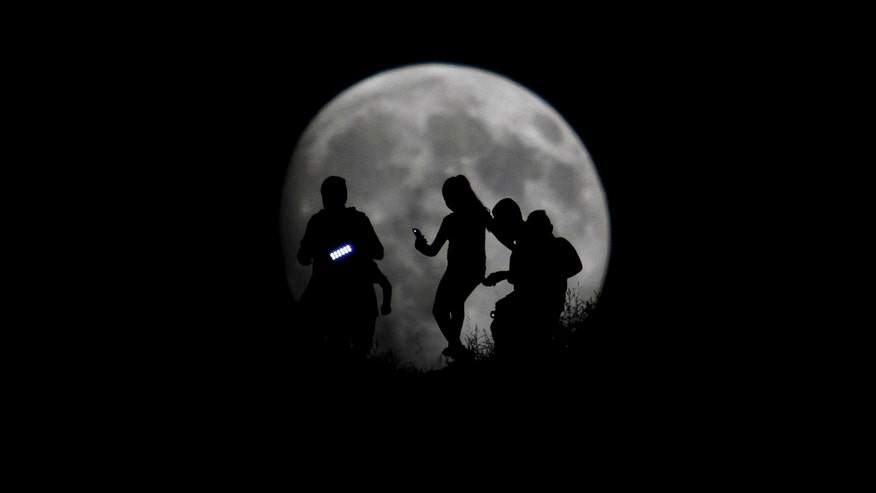Strict Standards: Only variables should be assigned by reference in /home/noahjames7/public_html/modules/mod_flexi_customcode/tmpl/default.php on line 24
Strict Standards: Non-static method modFlexiCustomCode::parsePHPviaFile() should not be called statically in /home/noahjames7/public_html/modules/mod_flexi_customcode/tmpl/default.php on line 54
Strict Standards: Only variables should be assigned by reference in /home/noahjames7/public_html/components/com_grid/GridBuilder.php on line 29

File photo - A group of hikers are seen silhouetted against the moon in Tijuana, Mexico, Aug. 27, 2015. (REUTERS/Jorge Duenes)
Stargazers are in for a treat Sunday when a supermoon combines with a lunar eclipse for the first time since 1982.
The supermoon eclipse will last 1 hour and 11 minutes, and will be visible to North and South America, Europe, Africa, and parts of West Asia and the eastern Pacific, according to NASA. Weather permitting, the supermoon will be visible after nightfall, and the eclipse will cast it into shadow beginning at 8:11 p.m. ET. The total eclipse starts at 10:11 p.m. ET, peaking at 10:47 p.m. ET.
A rare phenomenon, there have only been five supermoon eclipses since 1900 (in 1910, 1928, 1946, 1964 and 1982). After Sunday, the next supermoon eclipse will occur in 2033.
A supermoon occurs when a new or full moon is at its closest to the Earth. "Because the orbit of the moon is not a perfect circle, the moon is sometimes closer to the Earth than at other times during its orbit," said Noah Petro, deputy project scientist for the Lunar Reconnaissance Orbiter at NASA’s Goddard Space Flight Center in Greenbelt, Maryland, in a statement. "When the moon is farthest away it’s known as apogee, and when it’s closest it’s known as perigee. On Sept. 27, we’re going to have a perigee full moon—the closest full moon of the year."
Related: Supermoon lunar eclipse: How science explains the epic night sky event
The space agency explains that, at perigee, the moon is about 31,000 miles closer to Earth than at apogee. This proximity makes the moon appear 14 percent larger and 30 percent brighter in the sky than an apogee full moon, hence the term "supermoon."
Lunar eclipses have long been a source of fascination.
“Throughout human history, lunar eclipses have been viewed with awe and sometimes fear,” explained NASA, in a statement. “Today, we know that a total lunar eclipse happens when the full moon passes through the darkest part of Earth's shadow, the umbra.”
Read more http://www.foxnews.com/science/2015/09/24/sundays-rare-supermoon-eclipse-what-need-to-know/
Strict Standards: Only variables should be assigned by reference in /home/noahjames7/public_html/modules/mod_flexi_customcode/tmpl/default.php on line 24
Strict Standards: Non-static method modFlexiCustomCode::parsePHPviaFile() should not be called statically in /home/noahjames7/public_html/modules/mod_flexi_customcode/tmpl/default.php on line 54
Find out more by searching for it!
